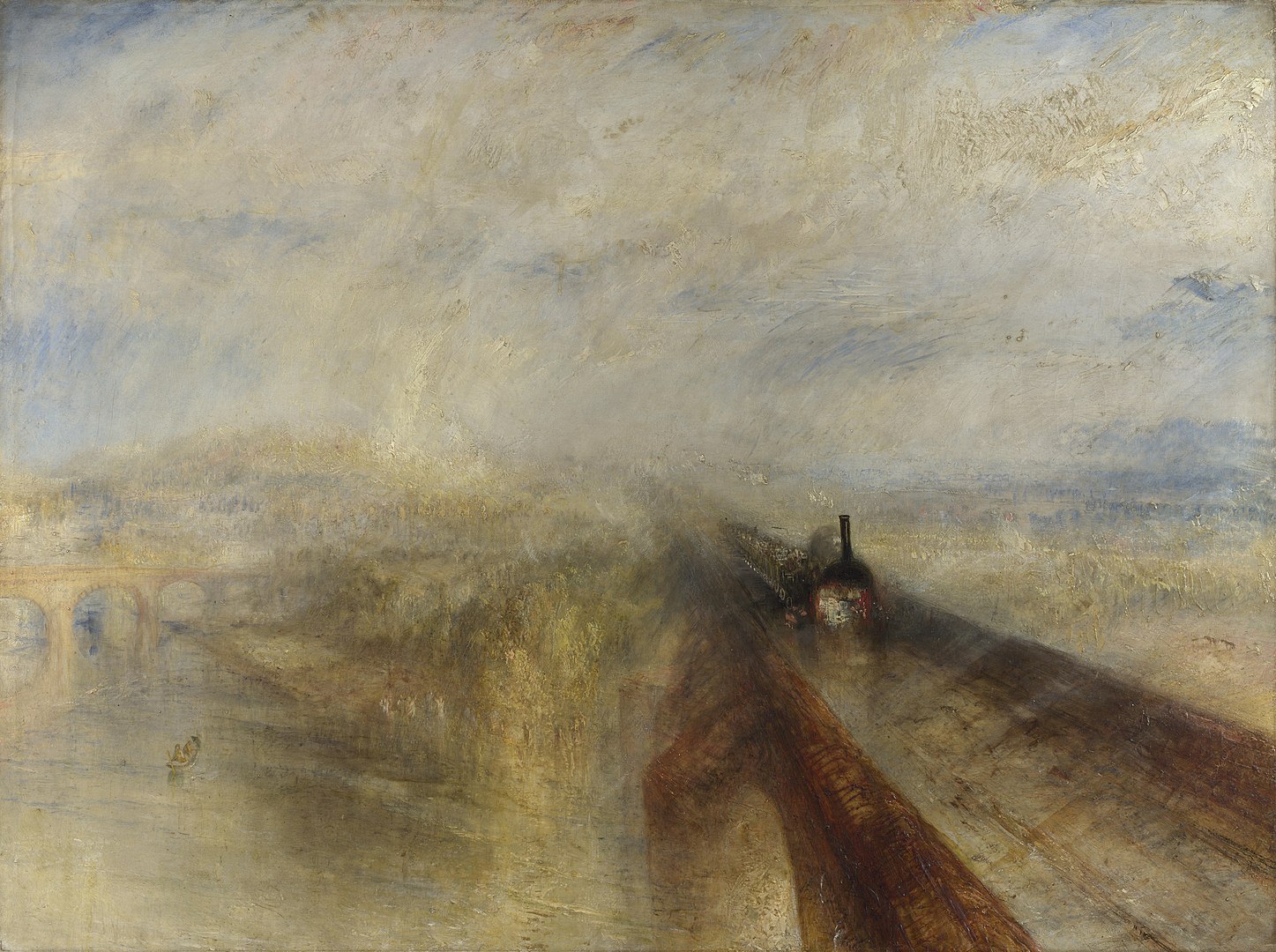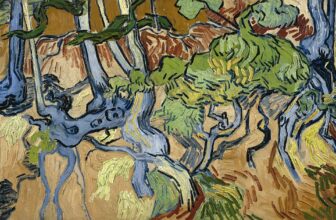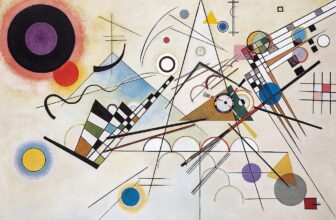
The Masterpiece of Motion: J.M.W. Turner’s Rain, Steam, and Speed
J.M.W. Turner’s Rain, Steam, and Speed – The Great Western Railway is one of the most significant and evocative paintings of the 19th century. Completed in 1844, this masterpiece captures the raw power of the industrial revolution, symbolizing the unstoppable force of technological progress. But beyond its striking imagery, Turner’s work is deeply layered with meaning, questioning the relationship between nature and industry, tradition and modernity, and the ephemeral and the eternal.
Turner, often regarded as one of the greatest painters of light and atmosphere, creates a sense of motion and energy that draws viewers into a world where rain, steam, and speed merge into a dynamic and almost dreamlike vision. But what exactly is Rain, Steam, and Speed related to, and what was Turner trying to communicate through his remarkable use of atmospheric perspective? Let’s dive deeper into this extraordinary artwork.
The Context: What is Rain, Steam, and Speed Related To?
This painting is closely tied to the Industrial Revolution, a period of rapid technological and industrial advancements that reshaped society. During the early 19th century, Britain saw the rise of railways as a revolutionary mode of transportation, connecting cities, facilitating trade, and fundamentally altering perceptions of distance and time.
The subject of Rain, Steam, and Speed is the Great Western Railway, one of the most significant railway lines in England, engineered by the famous Isambard Kingdom Brunel. The railway connected London with the western regions of England, heralding a new era of mobility and economic expansion. Turner’s painting depicts a train hurtling across the Maidenhead Railway Bridge over the River Thames, symbolizing the relentless march of progress.
Yet, within this celebration of industry, there is also a profound sense of ambiguity—an interplay between excitement and unease, innovation and disruption. Turner’s choice of elements—rain, steam, and speed—suggests both the force of progress and its fleeting, uncontrollable nature.
The Artist’s Message: What is Turner Communicating?
Turner was a visionary artist who saw the profound changes of his time and sought to capture them through his paintings. In Rain, Steam, and Speed, he is not simply documenting a train journey; he is exploring the philosophical and emotional impact of industrialization. His work conveys several key themes:
1. The Triumph of Technology
The powerful locomotive dominates the composition, emerging from the mist with an almost supernatural force. It represents the achievements of human ingenuity, the conquest of nature through engineering, and the new era of industrial strength.
2. The Transience of Nature and Tradition
Turner’s swirling rain and mist contrast with the train’s rigid steel structure, highlighting the tension between nature and industry. In the lower left corner of the painting, a tiny hare scurries across the tracks—a poignant symbol of nature struggling to keep pace with the unstoppable machine. Some interpretations suggest that the hare represents speed in its natural form, now overshadowed by the mechanical force of the train.
3. The Sublime and the Uncertain Future
Turner was deeply influenced by the Romantic movement, which emphasized the sublime—the awe-inspiring power of nature and human experience. The blurred, chaotic energy of the painting suggests both exhilaration and apprehension. The future, as symbolized by the train, is rushing forward, but whether it leads to triumph or destruction remains unknown.
By using an ethereal and almost abstract approach, Turner challenges the viewer’s perception, making the train appear as if it is dissolving into the atmosphere. This technique conveys the idea that speed and progress are ephemeral forces, as fleeting as the steam that powers them.
The Use of Atmospheric Perspective in Rain, Steam, and Speed
One of Turner’s greatest strengths as a painter was his masterful use of atmospheric perspective—a technique that creates depth and distance through color, light, and contrast. In this painting, he employs atmospheric perspective in several ways:
1. Blurring of Boundaries
Turner dissolves the edges of forms, making the train, bridge, and landscape blend into one another. This soft focus mimics the effects of motion, speed, and rain, giving the painting an almost impressionistic quality decades before Impressionism officially emerged as an art movement.
2. Gradation of Colors
The foreground is painted in rich, earthy tones, while the background fades into cooler, mistier hues. This creates a sense of depth, making the train appear as though it is emerging from a storm into the viewer’s space. The use of golden light breaking through the clouds suggests a contrast between the chaos of nature and the guiding force of human innovation.
3. The Illusion of Speed
Turner’s use of diagonal composition enhances the feeling of movement. The train rushes forward at an angle, reinforced by the streaks of rain and the diagonal lines of the bridge. The smudged, almost ghostly appearance of the train adds to the sensation of rapid motion, making the viewer feel as though they are witnessing a fleeting moment frozen in time.
Where is Turner’s Rain, Steam, and Speed Today?
Turner’s masterpiece is housed in the National Gallery in London, where it remains one of the most celebrated works in the museum’s collection. Visitors from around the world come to see this iconic painting, drawn to its mesmerizing portrayal of energy, light, and transformation.
Over the years, Rain, Steam, and Speed has inspired countless artists and thinkers, influencing movements such as Impressionism and modern abstraction. Its timeless themes of progress, change, and the human relationship with technology continue to resonate in today’s world, where innovation still drives society forward at an ever-increasing pace.
A Vision of the Past, Present, and Future
J.M.W. Turner’s Rain, Steam, and Speed – The Great Western Railway is more than just a painting of a train—it is a meditation on the forces shaping the modern world. Through his masterful use of light, color, and atmosphere, Turner captures the exhilarating yet uncertain nature of progress. His work remains as relevant today as it was in the 19th century, reminding us of the beauty, power, and impermanence of the world we build.
Whether viewed as a celebration of industrial achievement or a cautionary reflection on the costs of progress, Rain, Steam, and Speed continues to captivate audiences, proving that great art transcends time and speaks to the core of the human experience.





